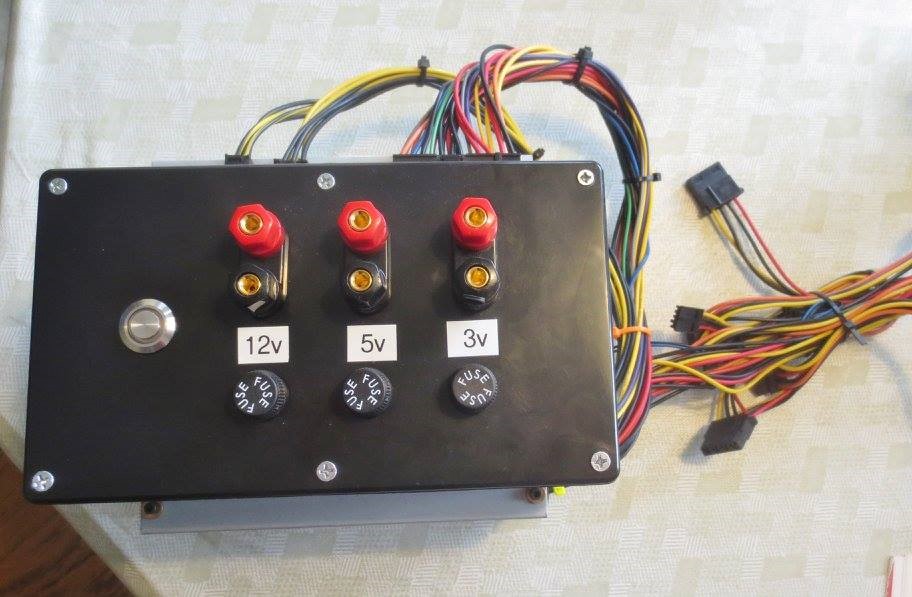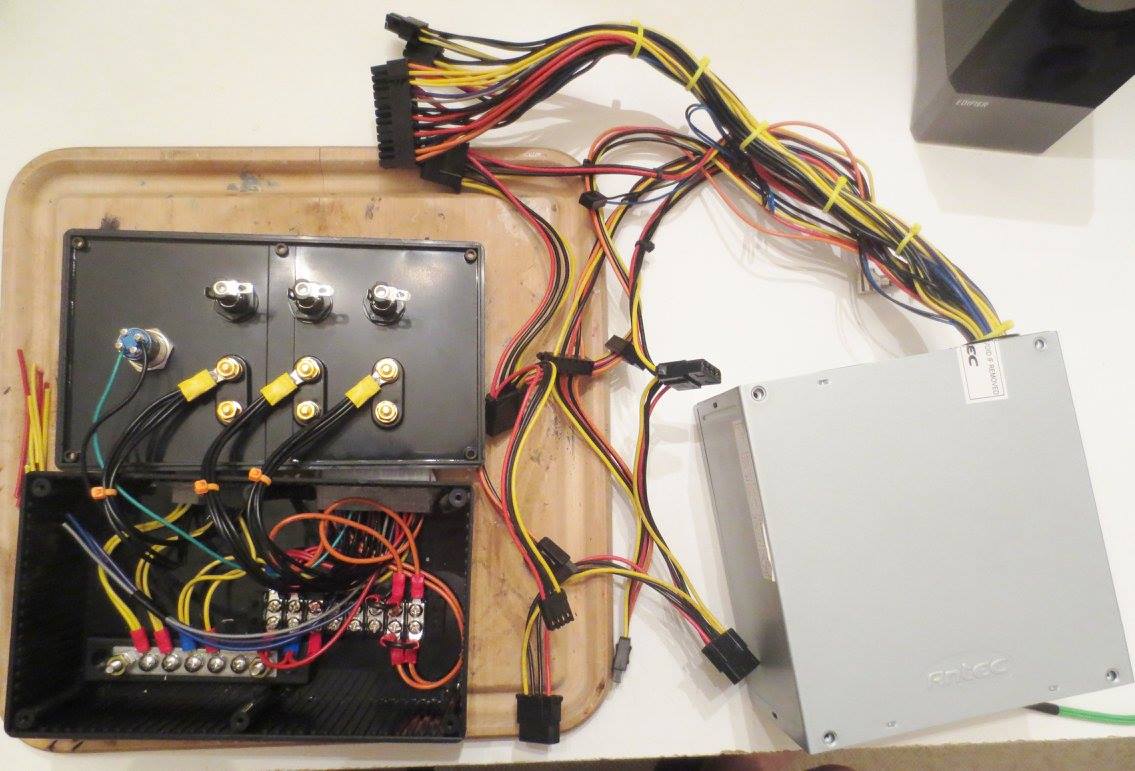
DIY Workbench Power Supply
Purpose
While working on electronics, there is a need to power many different devices, such as small microprocessors, battery chargers, motors. Most of the time, I need to make room on a power strip to plug in a bulky wall adapter for each device. However, some devices, such as motors, don’t have an easy way to plug in a power supply. They require a separate power supply with bare wires going to the proper terminals. I realized that we had a spare power supply from an old computer around the house, so I designed and built a device that allows me to use the PC power supply to power many different devices with different power requirements for quick and easy testing.
Parts
- Hammond Plastic Project Box
- Screw down type Banana plugs
- Light-up metal latching button
- Electrical Terminal Bus Bars
- Standard Fuse Holders
- 4 Pin ATX Power Plug
- 6 Pin ATX Power Plug
- 24 Pin ATX Power Plug
- Various Crimp Terminals and Hardware
Details
I wanted to make a simple self contained circuit that you can plug into any standard PC power supply that allows you to tap off of the 3 volts, 5 volts, and 12 volts that the power supply outputs. I wanted the device to be versatile while still providing ease of use, and more importantly short-circuit protection. I picked out a set of Banana plug style connectors for the outputs because they allow you to also insert bare copper wire and screw them down to clamp the wire in place. I also picked out a set of fuse holders that can hold fuses of different ratings, from .5 amps to 30 amps, depending on the size and power requirements of the project. As a result, the power supply can be used to power small 5 volt Arduino microprocessors, 3.3 volts LED lights, and even power hungry electric motors in robotics applications.
